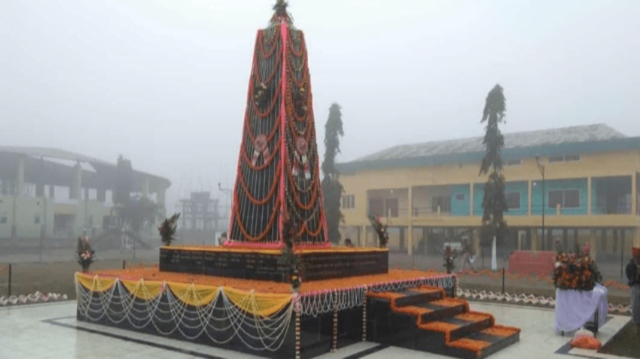UPSC Articles
MODERN HISTORY
Topic:
- GS-1: The Freedom Struggle — its various stages and important contributors/contributions from different parts of the country.
Patharughat Uprising in Assam
Context: Nearly Twenty five years before the Jallianwallah Bagh massacre (1919), more than a hundred peasants fell to the bullets of the British on January 28, 1894 in Assam. The unarmed peasants were protesting against the increase in land revenue levied by the colonial administration, when the military opened fire.
What led to the Patharughat uprising?
- Assam Annexation and Survey of Land: After the British annexation of Assam in 1826, surveys of the vast lands of the state began. This was primarily intended to make accurate assessment of land so as to increase the land revenues from the region.
- Levying of Land taxes: On the basis of such surveys, the British began to impose land taxes, much to the resentment of the farmers.
- Increase of Taxes: In 1893, the British government decided to increase agricultural land tax reportedly by 70- 80 per cent.
- Raij Mels across Assam: Up until 1893, peasants would pay taxes in kind or provide a service in lieu of cash. Across Assam, peasants began protesting the British move of increasing taxes by organising Raij Mels, or peaceful peoples’ conventions
- Repression by British: Despite these gatherings at Raij Mels being democratic, the British perceived them as “breeding grounds for sedition”. So whenever there was a Raij Mel, the British used to come down on it with a heavy hand to disperse them.
- January 28, 1894 firing at Patharughat Protest: When the British officers were refusing to listen to the farmers’ grievances, things heated up and there was a lathi charge, followed by an open firing which killed many of the peasants who were gathered at Patharughat, a small village nearly 60km northeast of Guwahati.
- High Casualties: Official placed the casualties in the Patharughat incident as 15 killed and 37 wounded, however it is estimated by eyewitnesses that close to 140 people were killed.
Significance of the Incident:
- Inspirational for Assamese Community: For the larger Assamese community, Patharughat comes second only to the Battle of Saraighat, when the Ahoms defeated the Mughals in 1671. It was considered extremely inspirational for the Assamese community, like a national awakening.
- Mass protest against British: It was one of the few occasions in the history of the pre-Congress, pan-Indian anti-imperialist movement, when, in the absence of a well defined leadership, the masses organised themselves to resist the autocratic designs of the British.
Critical Analysis of incident:
- Means adopted: While many often refer to the episode as the “Patharughat Ron” or the “Battle of Patharughat”, it is a “misnomer.” The mass protest was a peaceful one and a precursor to the Civil Disobedience movement, which was later propagated by Mahatma Gandhi.
- Doesn’t feature in Mainstream Historical Discourse: The incident is considered as one of the most tragic and inspiring episodes in the saga of the Indian freedom movement. However, it rarely features in mainstream historical discourse of the freedom struggle.

Honouring Partharughat Upsiring:
- Martyr’s Column: In memory of farmer martyrs of the historic Patharughat uprising, a “martyrs column” stands where the incident took place. This helps recall the sacrifice and valour of the farmers in fighting against the colonial rulers.
- Krishak Swahid Diwas: Every year on January 28, the government and local people pay respects to the martyrs of the incident (Krishak Swahid Diwas) in an official function. On January 29, the Indian Army pays its respects in military style.
- Popular Culture: Over the years, films, theatre, folktales and, serials have been made on the subject which is how it’s slowly entering popular imagination.
- Skill Development Centre: On January 28, 2021, Assam CM inaugurated an Integrated Training and Skill Development Centre for the farmers near the site that will be equipped to teach farmers new skills and technology.














